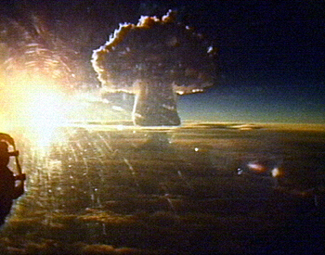

 Tsar Bomba (Russian: Царь-бомба) is the nickname for the AN602 hydrogen bomb, the most powerful nuclear weapon ever detonated. Also known as Kuz`kina Mat` (Russian: Кузькина мать, Kuzka's mother).
Tsar Bomba (Russian: Царь-бомба) is the nickname for the AN602 hydrogen bomb, the most powerful nuclear weapon ever detonated. Also known as Kuz`kina Mat` (Russian: Кузькина мать, Kuzka's mother).
Developed by the Soviet Union, the bomb was originally designed to have a yiel







![[Image]](http://cryptome.quintessenz.org/mirror/eyeball/black-tom/pict61.jpg)